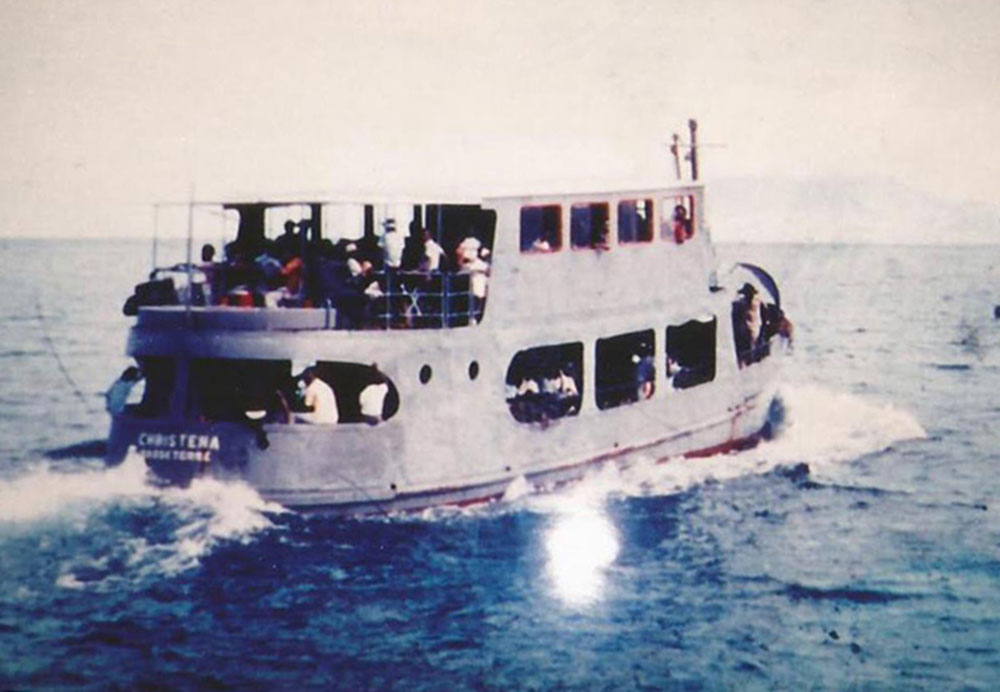On August 1, 1970, the small Caribbean island of Saint Kitts was rocked by a disaster that would leave a lasting impact on its people and the wider world. The Christena, a passenger ferry that regularly traveled between Saint Kitts and its sister island of Nevis, capsized and sank during a routine trip, resulting in the deaths of 233 people. The tragedy is still remembered as one of the worst maritime disasters in Caribbean history.
The Christena was a wooden ferry, built in 1933, and was the main mode of transportation for residents and visitors traveling between Saint Kitts and Nevis. The vessel was owned by the St. Kitts-Nevis-Anguilla National Bank, which had acquired it in 1968. Although the ferry had undergone several repairs and upgrades over the years, it was still considered to be outdated and in poor condition.
On the day of the disaster, the Christena was carrying a total of 337 passengers and crew, which was well above its maximum capacity of 196. The vessel departed from Basseterre, the capital of Saint Kitts, at around 3:30 p.m., with a crew of 14 and an estimated 323 passengers on board. Most of the passengers were locals, including many women and children who were returning from a day trip to Nevis.
The journey between the two islands normally took around 45 minutes, but the conditions that day were far from ideal. The sea was rough, with high waves and strong winds, and the ferry was reportedly struggling to navigate through the choppy waters. Despite this, the crew continued with the journey, and it wasn’t until they were well into the voyage that disaster struck.
According to eyewitness accounts, the Christena suddenly began to tilt to one side, causing panic among the passengers. Within minutes, the ferry had capsized and was rapidly sinking. Many of the passengers were trapped inside the vessel, unable to escape, while others were thrown into the sea and left to struggle for survival in the turbulent waters.
The response to the disaster was slow and disorganized. Rescue efforts were hampered by a lack of adequate equipment and trained personnel, as well as the fact that the ferry had been overcrowded and poorly maintained. It wasn’t until several hours after the sinking that the first bodies were recovered, and it took several days for all of the victims to be accounted for.
The aftermath of the Christena disaster was devastating. The loss of so many lives had a profound impact on the people of Saint Kitts and Nevis, and the wider Caribbean community. In the wake of the tragedy, there were calls for greater regulation and oversight of the maritime industry, as well as improved safety standards and training for crew members.
Today, the Christena disaster is remembered as a tragic event that highlighted the dangers of neglecting basic safety standards in the maritime industry. The legacy of those who lost their lives on that fateful day continues to inspire efforts to improve safety and prevent future disasters, both in the Caribbean and around the world.

